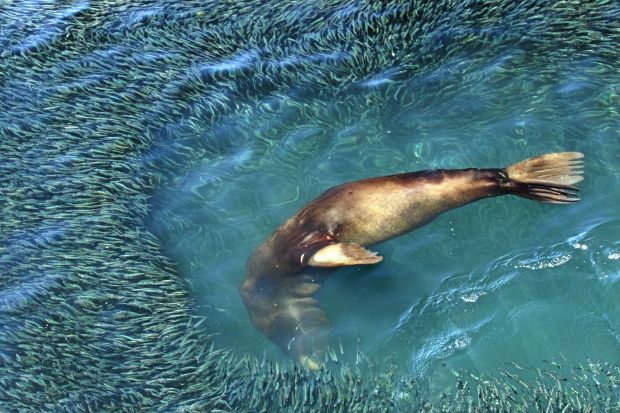
SANTA CRUZ — In a study published in early November, UC Santa Cruz researchers examined how much microplastic is present in the Monterey Bay and some of its inhabitants, and found that the tiny pieces of plastic pollution are not only prevalent in the water, but also in the fish and seabirds they studied.
“There’s been very little work understanding how much microplastic seabirds are ingesting because it’s not easy to do,” said Myra Finkelstein, adjunct professor at UCSC’s microbiology and environmental toxicology department. “When a bird eats a bottle cap and dies, you can see the bottle cap when you study the bird, but these are small microparticles.”
Although Finkelstein served as the study’s senior author, the microplastic research was spurred by former UCSC grad student and current fellow at the State Water Resources Control Board, Sami Michishita. The study’s goal was to find the prevalence, composition and estrogenic activity of microplastic in the Monterey Bay. Microplastic is plastic debris smaller than 5 millimeters in length, which is about the thickness of a pencil eraser.

In order to understand the bigger picture around these tiny particles, Michishita and her collaborators took water samples from the Moss Landing Marine Laboratory and in Santa Cruz at the Long Marine Laboratory, and focused on two species often found in the bay, northern anchovies and the seabird known as the common murres.
“Common murres are a resident species in the Monterey Bay and are around all the time,” said Finkelstein. “We thought they would be a good representative species for what’s happening in the bay, and anchovies are a big part of their diet.”
As Finklestein mentioned, measuring the amount of microplastic in the anchovies and birds is not an easy task. In order to measure the prevalence in the fish and bird carcasses donated to the study, researchers used chemicals to literally digest the digestive tracts of the two species. They then filtered out and analyzed the found particles with a method called Raman spectroscopy to identify whether they were plastic or another material such as cotton. The microparticles were also separated into categories of fiber, fragment, foam, film or bead. About 80% of the microparticles were fibers.
The researchers found that about 60% of anchovies and 100% of common murres studied had man-made microparticles present in their digestive system with about 60% of those particles identified as plastic with Raman spectroscopy. They also found about 2 particles per 1,000 liters from the seawater samples.
Among the particles found in the common murres, about 25% displayed estrogenic activity, which means the microplastic particles could leach chemicals and disrupt the hormonal systems of birds and humans.
“Many studies have shown that seabirds and other marine animals eat a lot of plastic, but what is it doing to them?” said Finkelstein. “A lot of compounds that are part of the plastic matrix are xenoestrogenic, which means they mimic estrogen, so they can combine to your estrogen receptors and cause things to happen that can have downstream effects for hormone, immune and reproductive function.”
Having studied the macroplastic pollution at the Midway Atoll and elsewhere, Finkelstein said she was not surprised to find the widespread occurrence of microplastic in the Monterey Bay, but was shocked to discover that every single seabird in the study had microparticles in their digestive tracts.
That was more than I would have thought, especially because studies that have looked at larger pieces of plastic, found low plastic ingestion rates in the murres, but I think that’s because we weren’t looking small enough,” said Finkelstein. “As our methods to detect smaller pieces of plastic become better, we are going to start finding them everywhere we look.”
Because of the ubiquity of plastic pollution globally and in the Monterey Bay, Finkelstein stressed the need for society to make sweeping changes in order to combat plastic pollution. She suggested that concerned individuals can think about filtering wastewater from their washing machines and supporting policies and companies that aim to curb plastic use.
“It’s important for us as a society to think about how we can move away from plastic and find alternatives because it’s just going to get worse,” said Finkelstein. “We have to prioritize innovation to move away from a plastic world.”
